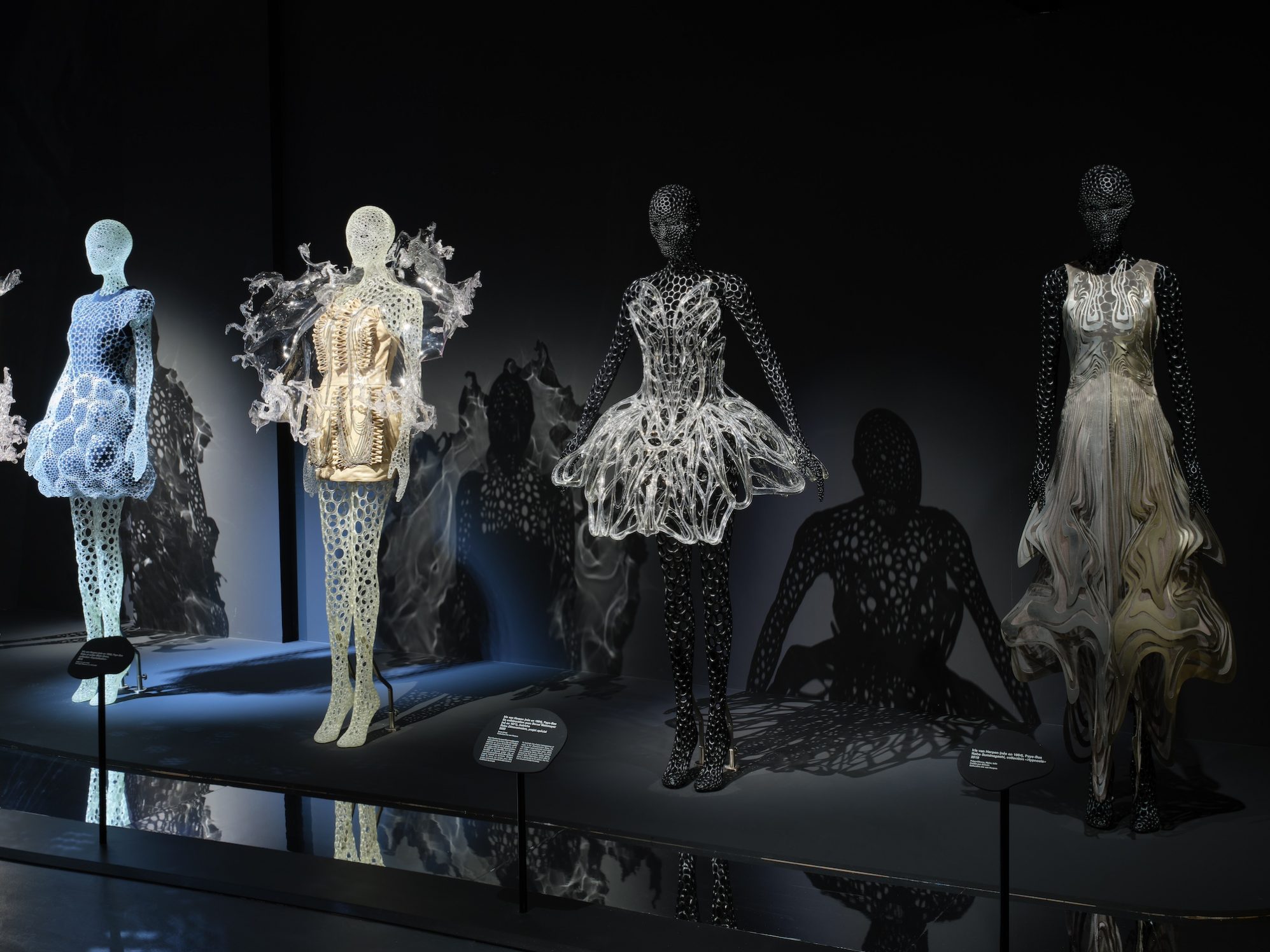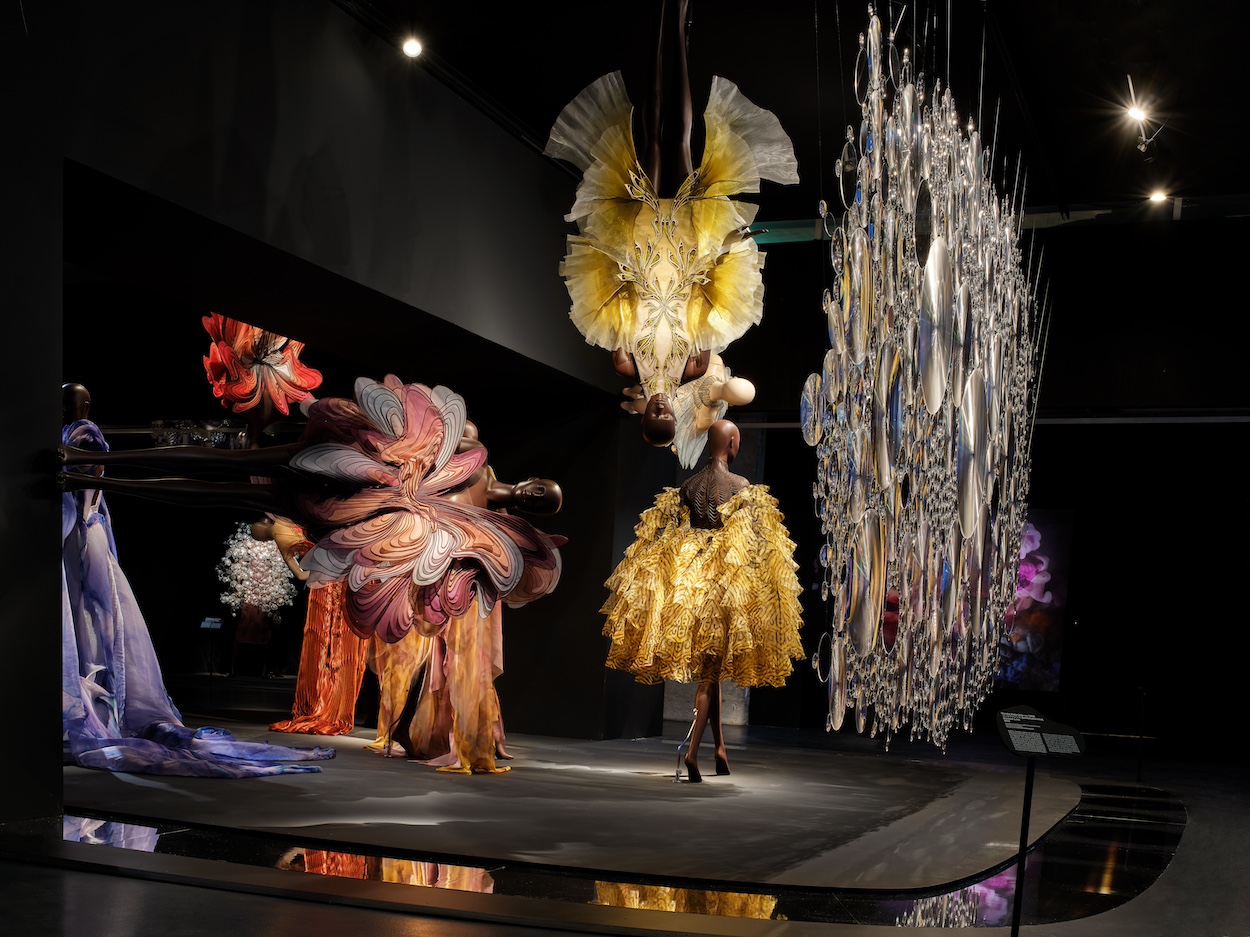Iris Van Herpen first experimented with 3D-printed clothing in 2010, before she shot to fashion-world fame for her otherworldly garments that capture a dazzling futurism. “It was a very important piece for me,” she said of the swirling wearable, whose polymer and eco-leather construction was devised with architect Daniel Wildrig. “This is when I started collaborating with architects and scientists. I started not only drawing inspiration from these disciplines, but working with them, and that really raised the level of my clothing.” More than a decade later, the Dutch couturier has carved a niche as one of the most forward-thinking designers working today. Her nonpareil vision incorporates cutting-edge technology to explore fashion as an interdisciplinary language inextricably tied to physics, biology, dance, and art.
“Iris Van Herpen: Sculpting the Senses,” a landmark solo exhibition that opened this past week at Paris’s Musée des Arts Décoratifs, showcases more than 100 of her most notable garments. There’s the radiant sci-fi–inflected gown worn by Grimes at the 2021 Met Gala, whose mirror-finish liquid silicone adornments were individually hand-cast and arranged in a 3-D “laser-cut labyrinth” onto a nude illusion bodice melted onto gradient-dyed, hand-pleated silk. (Van Herpen spent 900 hours perfecting its construction.) The dresses captivate as technological feats, but the show also brings her biggest influences to the fore. Museum-goers journey into her mind through a cabinet of curiosities packed with references from fossil fragments and crystalline lattices to Ferruccio Laviani’s glitchy wood armoire and bulbous feather sculptures by Kate MccGwire.




